Microcontrollers (MCUs) are the beating heart of modern electronics, powering everything from IoT devices to industrial automation systems. As we step into 2025, engineers are asking an important question: what is the best microcontroller 2025 has to offer? With the rise of smarter, connected devices, the demand for efficient, powerful, and versatile solutions is higher than ever. From the most popular microcontrollers used in wearables and robotics to the most powerful microcontroller running AI and automotive systems, the choices today are both wide and exciting.
In this blog, we’ve compiled a list of the best microcontrollers every engineer should know in 2025. Whether you are exploring the latest microcontroller releases or seeking proven MCUs with strong community support, this guide covers it all. From low-power designs to high-performance computing, these MCUs stand out for their balance of cost, efficiency, and real-world applications.
Key Microcontroller Features in the Latest and Most Powerful Microcontrollers
When comparing the latest microcontrollers and deciding on the best microcontrollers for your project, there are several key features to consider:
-
Clock Speed & Performance: Determines how fast your MCU processes data. High clock speeds are essential in the most powerful microcontrollers.
-
Memory Capacity: Both RAM and flash memory affect how complex your program can be.
-
Connectivity Options: Wi-Fi, Bluetooth, CAN, and Ethernet are common in the most popular microcontrollers for IoT.
-
Power Efficiency: Critical for wearables and remote sensors; ultra-low-power MCUs like the STM32L5 shine here.
-
Security Features: The latest microcontroller designs, such as the LPC5500, include TrustZone and crypto accelerators for secure IoT systems.
-
Community & Ecosystem: Sometimes the best microcontroller 2025 is the one with the strongest community support, like Arduino-based ATmega328P.
By weighing these features, engineers can make informed choices that align with both technical requirements and project budgets.
Why Microcontrollers Matter in 2025
Before we get to the list, let’s talk about why choosing the best microcontrollers is so critical in 2025. These compact chips integrate a processor, memory, and peripherals into a single package, making them ideal for embedded systems. With devices expected to be smarter, more energy-efficient, and capable of complex tasks like AI-driven data processing or wireless connectivity, the latest microcontroller technology directly impacts power consumption, speed, and overall design cost. Selecting the right MCU can determine whether your project succeeds or struggles.
1. STM32L5 Series (STMicroelectronics)
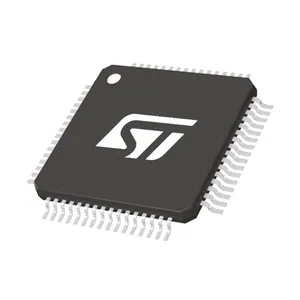
The STM32L5 series is one of the most popular microcontrollers for low-power applications in 2025. Built around the Arm Cortex-M33 core, it runs up to 110 MHz and includes TrustZone security for IoT devices. With power consumption as low as 30 nA in standby, it’s an excellent choice for battery-powered designs like wearables or sensors.
Why it’s one of the best microcontrollers 2025 offers: Engineers love the STM32L5 for its rich peripheral set, including multiple ADCs, DACs, and communication interfaces like I2C, SPI, and USB. Its flexibility makes it a go-to for everything from smart home gadgets to medical devices.
Key Specs:
- Clock Speed: Up to 110 MHz
- Flash Memory: Up to 512 KB
- RAM: Up to 256 KB
- Power Consumption: 108 µA/MHz (active)
2. ESP32 Series (Espressif Systems)
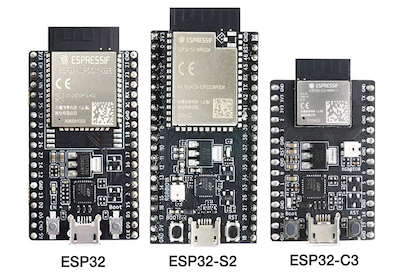
The ESP32 series remains one of the most popular microcontrollers in 2025 for engineers working on connected devices. This dual-core MCU, based on the Xtensa LX6 architecture, runs at up to 240 MHz and includes built-in Wi-Fi and Bluetooth. In 2025, its affordability (development boards start at under $10) and robust ecosystem make it a staple for IoT projects like home automation and smart agriculture.
Why it's among the best microcontrollers: what sets the ESP32 apart is its versatility—dual cores allow for multitasking, while peripherals like CAN and Ethernet support industrial use cases. Its active community and extensive libraries simplify development, even for complex applications.
Key Specs:
- Clock Speed: Up to 240 MHz
- Flash Memory: Up to 16 MB (external)
- RAM: 520 KB
- Connectivity: Wi-Fi, Bluetooth 5.0
3. ATmega328P (Microchip Technology)
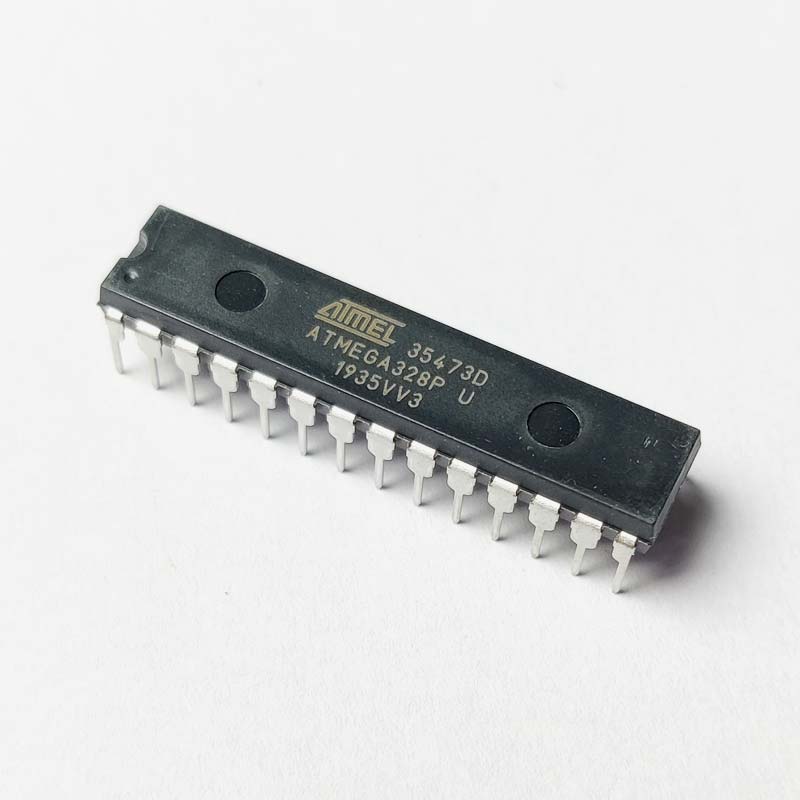
The ATmega328P is a classic 8-bit AVR microcontroller that powers the Arduino Uno. Despite its age, it's still the best microcontroller 2025 choice for beginners and educators thanks to its simplicity and massive community support. Running at 20 MHz, it offers 32 KB of flash memory and 2 KB of SRAM, making it ideal for small-scale projects like robotics or educational prototypes.
For engineers new to embedded systems, the ATmega328P is a great starting point. Its low cost and ease of programming via the Arduino IDE keep it in high demand for hobbyists and professionals alike.
Key Specs:
- Clock Speed: Up to 20 MHz
- Flash Memory: 32 KB
- RAM: 2 KB
- I/O Pins: 23
4. RP2040 (Raspberry Pi)
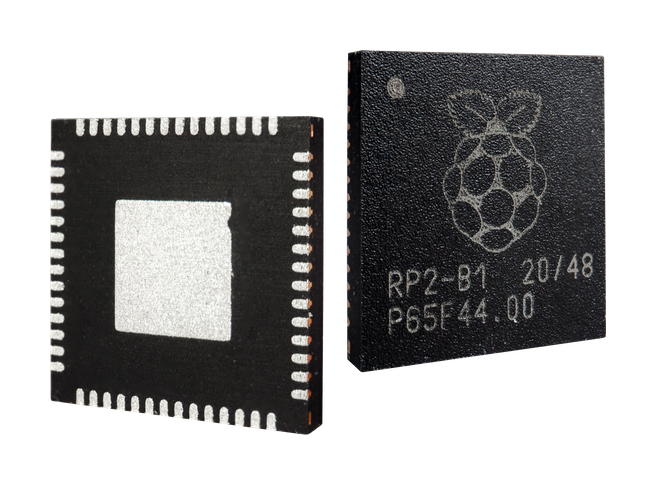
The RP2040, designed by Raspberry Pi, is one of the latest microcontrollers that has gained wide adoption. It is a dual-core Arm Cortex-M0+ MCU running at 133 MHz. Launched with the Raspberry Pi Pico, it's gained traction for its low cost (around $1 per chip) and impressive features, like 264 KB of SRAM and programmable I/O (PIO) for custom protocols. In 2025, it's a top pick for engineers building cost-sensitive, high-performance systems.
The RP2040 shines in applications like motor control and digital signal processing, thanks to its PIO and dual-core architecture. Its open-source support also makes it a hit among DIY enthusiasts.
Key Specs:
- Clock Speed: Up to 133 MHz
- Flash Memory: External, up to 16 MB
- RAM: 264 KB
- Unique Feature: Programmable I/O
5. MSP430FR Series (Texas Instruments)
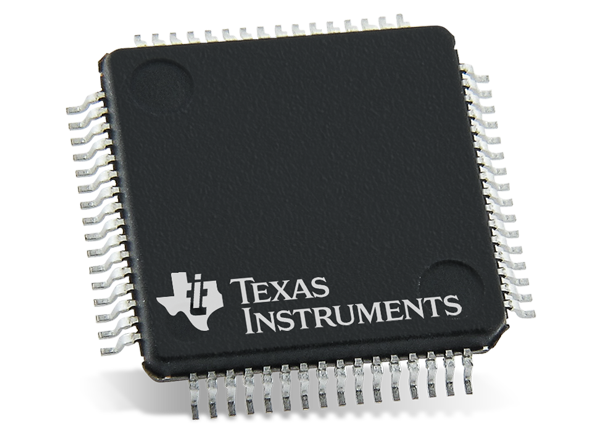
Texas Instruments' MSP430FR series is renowned for ultra-low-power performance, with some models consuming just 350 nA in standby mode. Built around a 16-bit RISC CPU, it includes ferroelectric RAM (FRAM) for fast, non-volatile memory access. In 2025, it's a top choice for energy harvesting and battery-less designs.
Engineers working on wearables, environmental sensors, or medical implants will find the MSP430FR's power efficiency and analog integration (e.g., 10-bit ADCs) invaluable.
Key Specs:
- Clock Speed: Up to 24 MHz
- Flash Memory: Up to 256 KB (FRAM)
- RAM: Up to 8 KB
- Power Consumption: 100 µA/MHz
6. PIC32MX Series(Microchip Technology)
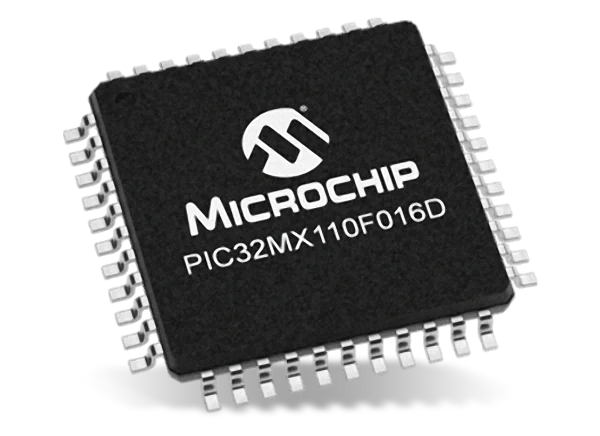
The PIC32MX series brings 32-bit power to the table with its MIPS M4K core, running at up to 120 MHz. With up to 512 KB of flash and 128 KB of RAM, it's suited for applications needing more processing muscle, like audio processing or graphical interfaces. In 2025, its robust peripheral set (UART, SPI, I2C) keeps it relevant for industrial and consumer electronics.
Why it’s considered one of the most powerful microcontrollers: its compatibility with Microchip's MPLAB X IDE and extensive documentation make it a reliable choice for engineers scaling up from 8-bit designs.
Key Specs:
- Clock Speed: Up to 120 MHz
- Flash Memory: Up to 512 KB
- RAM: Up to 128 KB
- I/O Pins: Up to 85
7. LPC5500 Series (NXP Semiconductors)
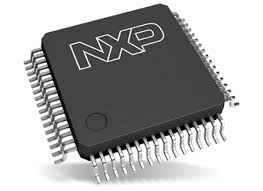
The LPC5500 series is one of the latest microcontrollers in 2025, combining performance, efficiency, and hardware-level security. Running at up to 150 MHz, it includes hardware accelerators for cryptography and up to 640 KB of flash. In 2025, it's a strong contender for industrial automation and secure IoT systems.
The LPC5500's energy efficiency (active mode at 32 µA/MHz) and advanced peripherals (CAN FD, Flexcomm interfaces) make it a versatile option for engineers tackling mission-critical designs.
Key Specs:
- Clock Speed: Up to 150 MHz
- Flash Memory: Up to 640 KB
- RAM: Up to 320 KB
- Security: TrustZone, Crypto Engine
How Does Microcontroller Work?
To understand why the best microcontrollers matter so much in 2025, it’s important to know how they work. A microcontroller integrates a processor, memory, and peripherals into a single compact chip. This allows engineers to control sensors, motors, displays, and communication modules without needing multiple components.
In practice, the best microcontroller 2025 will act as the “brain” of your device. For example, the most popular microcontrollers like the ESP32 or ATmega328P manage both computation and connectivity. On the other hand, the most powerful microcontroller options such as PIC32MX can handle advanced tasks like audio processing or real-time AI data analysis. Choosing the right MCU ensures efficiency, cost savings, and reliability in embedded designs.
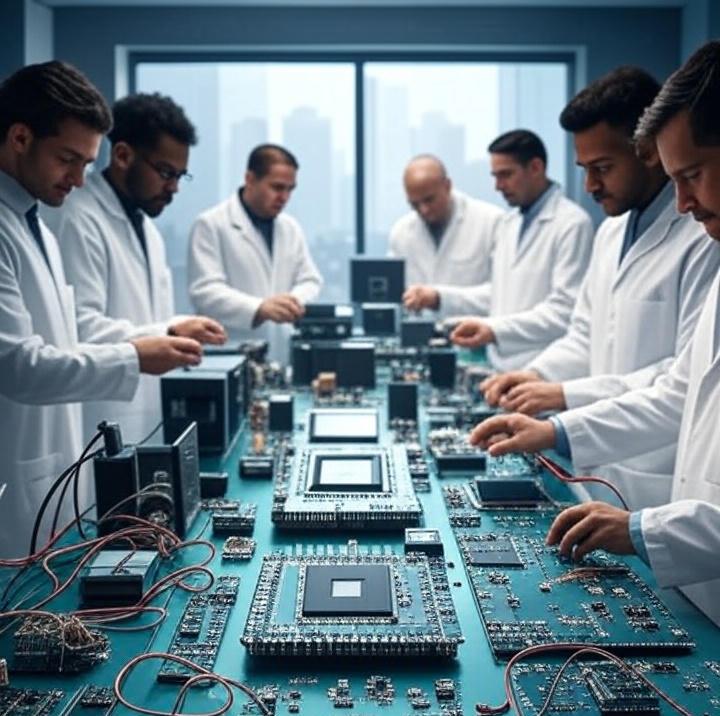
Choosing the Right MCU for Your Project
With so many options, how do you decide on the best microcontroller 2025 for your needs? It depends on your project's needs. For low-power designs, the MSP430FR or STM32L5 might be best. Need connectivity? The ESP32 has you covered. High-performance tasks call for the RA8M1 or SAM E series. Consider factors like clock speed, memory, power consumption, and available peripherals. Prototyping early with a development board can also help you test your choice before committing.
For engineers looking to bring their designs to life, partnering with a reliable manufacturing service can streamline the process. ALLPCB offers quick-turn prototyping, advanced PCB manufacturing, and global logistics, ensuring your MCU-based projects move from concept to reality with speed and precision. Whether you're testing an ESP32 IoT device or a complex RA8M1 system, we're here to support your innovation every step of the way.
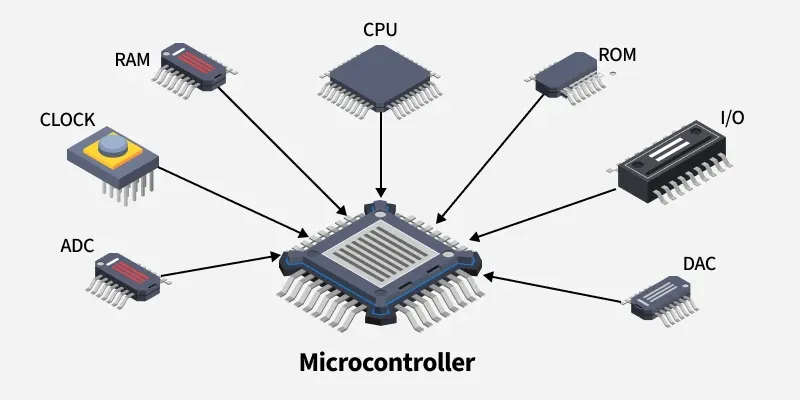
Applications of the Best Microcontrollers 2025 in Real-World Projects
The best microcontrollers 2025 are not just about specs — they shine when applied to real-world systems. Engineers rely on the most popular microcontrollers and the most powerful microcontrollers to bring innovative ideas to life across industries:
Electric Vehicle Battery Management
The best microcontrollers 2025 are crucial for EV battery systems, handling cell balancing, thermal monitoring, and safety checks. The most powerful microcontrollers ensure reliable communication via CAN FD and LIN, extending battery life and improving efficiency. Learn more in Selecting the Right Microcontroller for Your EV Battery Management PCB
Autonomous Vehicle Control
Autonomous vehicles demand the latest microcontrollers with high-speed processing and AI support. The most popular microcontrollers integrate redundancy and advanced communication like Ethernet or CAN XL to ensure safety in real-time decision-making. See more in Selecting the Right Microcontroller for Your Autonomous Vehicle Control PCB
Smart Parking and Automatic Gate Control
The best microcontrollers 2025 enable efficient smart parking through RFID, wireless control, and motor management. Compact yet powerful, the most popular microcontrollers balance low power with reliable connectivity for urban automation. Read more in Automatic Gate Control for Parking Using a Custom PCB and Microcontroller
Hotel Room Automation
Hotels increasingly adopt the latest microcontrollers to manage lighting, HVAC, and security systems. The most powerful microcontrollers support IoT connectivity, ensuring energy efficiency and guest convenience. Explore details in Selecting the Right Microcontroller for Your Hotel Room Control PCB
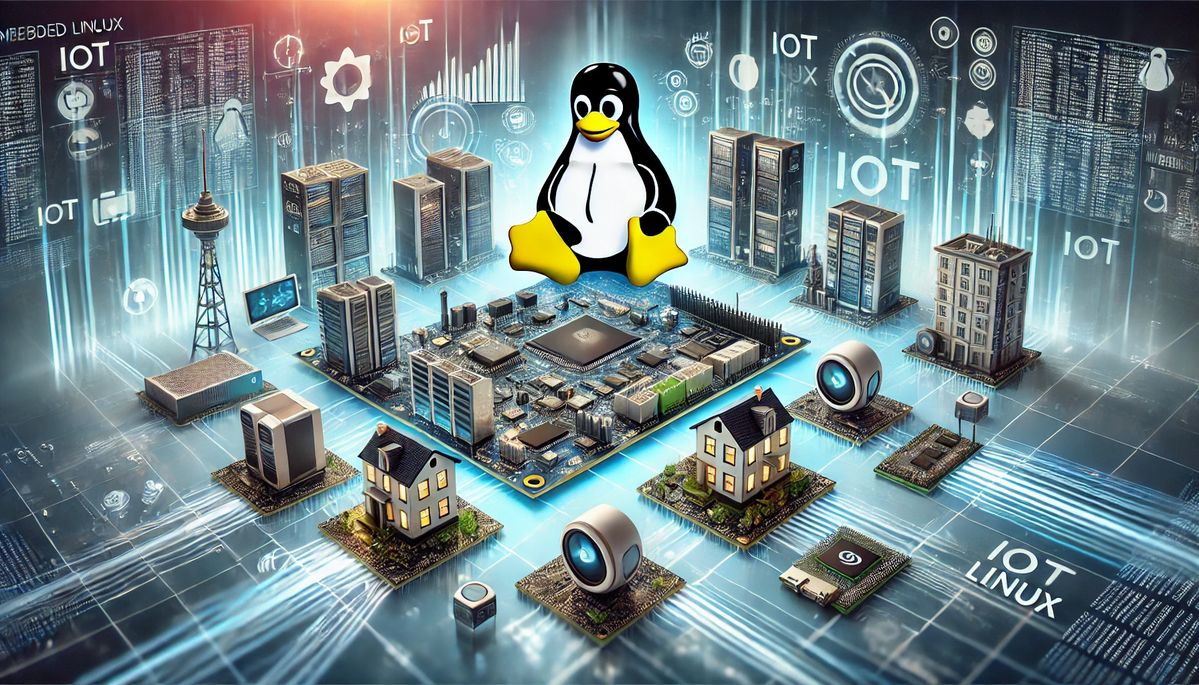
FPGA or Microcontroller – Which to Choose in 2025
When designing embedded systems, engineers often debate whether to use an FPGA or a microcontroller. The best microcontrollers 2025 are ideal for tasks that require cost efficiency, low power consumption, and ease of programming. They integrate memory, peripherals, and processing cores in a compact chip, making them perfect for IoT devices, wearables, and automotive electronics.
On the other hand, FPGAs excel in applications that demand high parallel processing, custom hardware acceleration, or extreme performance. While they offer unmatched flexibility, they are more expensive, consume more power, and require specialized design knowledge.
FPGA vs Microcontroller Comparison

Conclusion
The microcontroller landscape in 2025 offers something for every engineer. From the latest microcontroller designs like RP2040 and LPC5500, to the most popular microcontrollers like ESP32 and ATmega328P, and the most powerful microcontrollers like PIC32MX, there’s no shortage of options. By mastering these best microcontrollers 2025, engineers can build smarter, faster, and more efficient systems — whether in IoT, industrial automation, or consumer electronics.
And when it’s time to bring your design to life, partnering with a trusted manufacturing service like ALLPCB ensures your MCU-powered projects move smoothly from prototype to production with precision and speed.
 ALLPCB
ALLPCB







